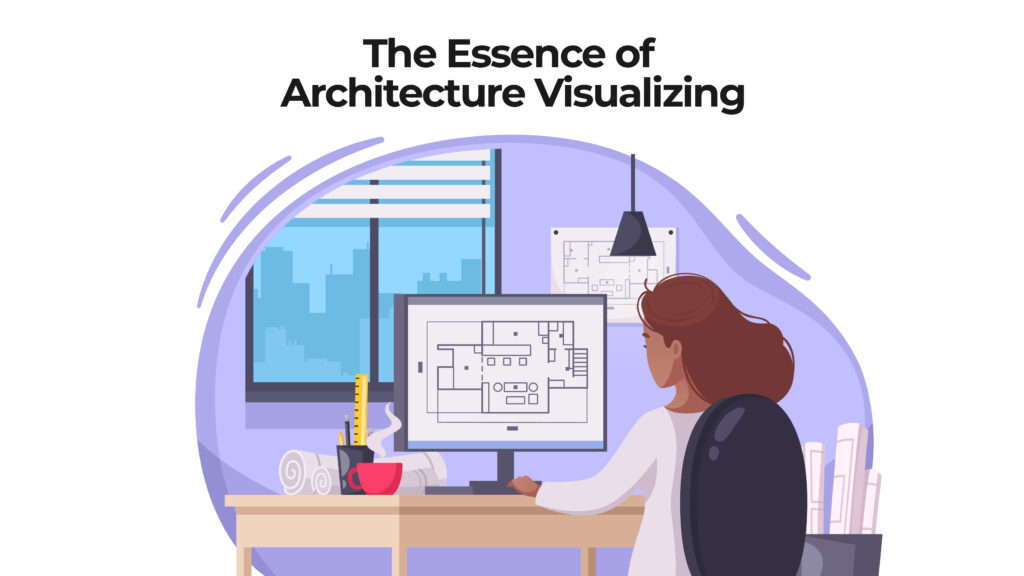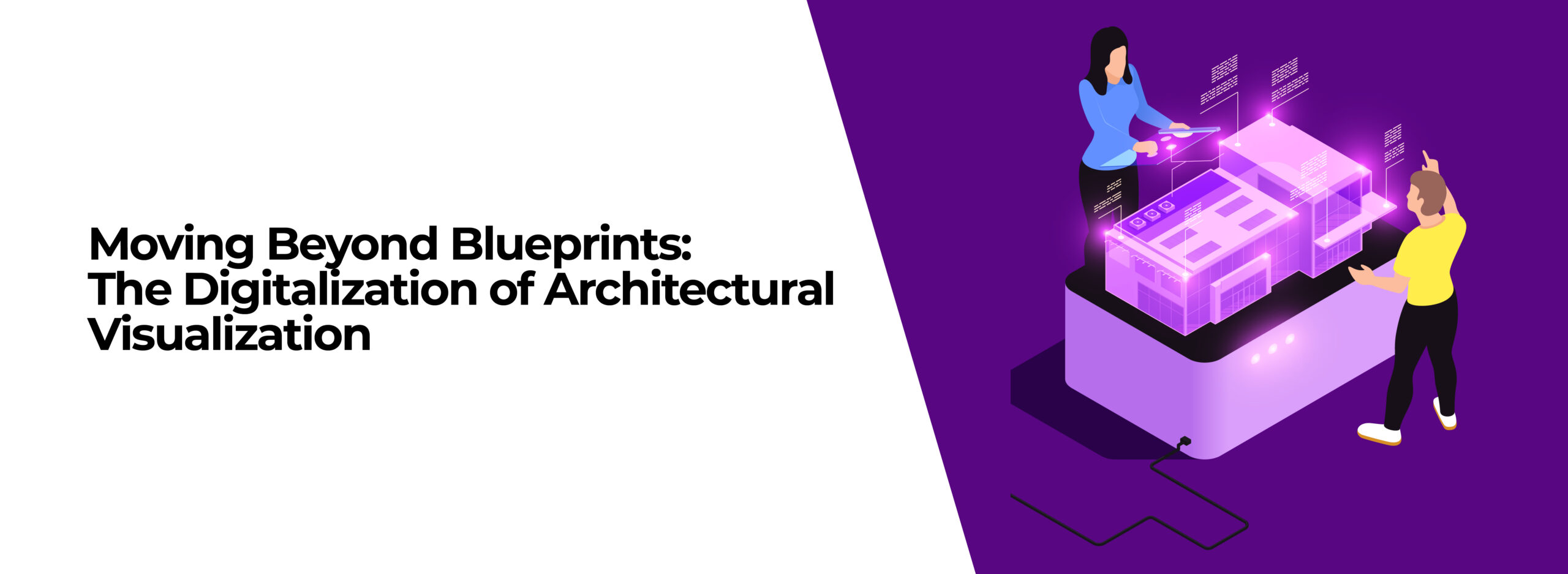Architecture Visualizing: How Technology is Changing the Game
Architectural visualization has traditionally played a vital role in the design process, helping architects and designers communicate their ideas to clients and other stakeholders. But things are different now, thanks to the rapid development of technology. Recent technological advances have allowed the development of methods for producing visually stunning and convincing computer-generated content.
With the advent of cutting-edge tools like 3D modeling and virtual reality, architects now have unprecedented access to their designs. In this piece, we’ll delve into the state-of-the-art developments in architectural visualization and discuss how they’re altering the landscape.
What is Architectural Visualization?
Creating photorealistic images of a building or structure before construction is called architectural visualization. The ability to visualize and communicate designs to customers, stakeholders, and the rest of the project team makes it an indispensable tool for architects, designers, and builders. This can be anything from a few lines on a page to a fully 3D model, VR simulation, or interactive walkthrough.
Architectural visualization aims to aid in understanding and visualization of the design, the detection of possible difficulties, and making better-informed decisions throughout the design and construction process for the benefit of all parties involved. It can improve the quality and timeliness of a project by reducing the number of mistakes and reworks needed.

Types of Architectural Visualization
There’re many different kinds of architectural visualization, and each has its own set of distinguishing qualities and uses. The following are some of the most widespread types:
Still Images
Architectural visualizations typically take the form of still photographs, the most prevalent type. These two-dimensional graphics display a single view of the room or building from a predetermined vantage point. The use of still photographs, which can be either photorealistic or stylized, is common practice when presenting a design concept to customers or other stakeholders.
3D Models
3D models are digital representations of a building or environment that can be viewed from any angle. 3D models can be created using the software. They can test various design concepts and model how a building or space will look and operate when constructed in the real world.
Virtual Reality
An immersive experience that enables users to explore a digital environment in three dimensions is Virtual reality (VR). Virtual reality is also abbreviated as VR. Virtual reality (VR) can mimic what it would be like to be inside a building or space, which can assist clients and stakeholders in gaining a better understanding of how the design will look and function.
Augment Reality
When digital information is superimposed over the real world, generally through a mobile device such as a smartphone or tablet, it’s Augmented reality (AR). AR can demonstrate to clients and other stakeholders how a future building or area would seem when placed inside its natural environment.
Animations
An animation is a video created by stitching together a succession of still photographs or 3D models to generate the final product. Animations are a strong tool that can be used to communicate complicated design concepts. They may be used to depict how the appearance of the building or space will change over time and how it will function.
Why Is Architectural Visualization Significant?
The importance of 3D architectural visualization can be broken down into several categories, including the following:
Improved Visualization
Customers and other stakeholders can get a much more precise and accurate idea of the final product with the help of architectural 3D visualization. Drawings and sketches in only two dimensions are inadequate for this purpose.
Clear Communication
It makes it easier for architects and designers to communicate clearly with clients and other project team members about their ideas and concepts. As a direct consequence, fewer errors and misunderstandings will occur.
Get your Free 30 Minute strategy session with an experienced digital animators
Don't Be Shy, Say Hi!
Quick Design Process
There is a reduction in the amount of time and effort spent designing. The use of 3D architecture visualization allows for the iteration of designs in a fast and uncomplicated way. So, it is feasible that the design process could proceed more expediently and effectively.
Saving money
The number of necessary repetitions for correcting faults can be cut down by using 3D architectural visualization. This is made feasible as a result of the fact that it helps the early detection of faults and errors in design.
Marketing Tool
As an advertising method, three-dimensional architectural visualization can present the building or structure to potential purchasers, investors, or tenants. They can generate a more accurate visual picture of how the completed structure would appear. As a result, enabling them to arrive at decisions based on this information.

How Technology Is Changing Architectural Visualization
The practice of 3D architectural visualization has been significantly impacted by developments in technology in recent years. These days, architects and experts specializing in picturing can utilize a variety of techniques to create pictures of prospective buildings and structures that are both realistic and accurate. The use of these visualization tools gives professionals the ability to investigate a variety of design possibilities and more effectively explain their ideas.
The use of technology in architectural conception has also brought about shifts in the collaborative practices of architects and professionals working in visualization. Historically, architects would first draught their ideas on paper in the form of drawings and sketches, which would then be interpreted by visualization professionals and transformed into images. Yet, in today’s world, architects and visualization specialists frequently collaborate from the very beginning of a project, making use of technology to develop a mutual comprehension of the design.
It is quite likely that the discipline of architectural 3D visualization will continue to develop and adapt alongside the progression of technology. The collaboration between architects and visualization specialists is likely going to shift as a result of the development of new tools and approaches as well as.
The Future Of Architectural Visualization
The field of architectural visualization appears to have an extremely promising future. As a result of advances in technology, it is now possible for us to generate 3D realistic models in three dimensions of buildings and landscapes. Because of this, architects and engineers are able to demonstrate to their clients what the final product will look like even before it is constructed.
This technology is also being utilized to build simulations of cityscapes that are as realistic as possible. We can observe how the addition of new buildings will affect the infrastructure that is already in place, which is a very valuable aspect of future planning.
The possibilities that’ll be made available for architectural visualization are hard to fathom given the current state of technological advancement, but we can only wait and see. We’ll have the ability to develop models and simulations that are even more accurate, which will be of great assistance to us as we plan and design better cities for the future.

Design Your Dreams
You can reach out to Cloud Animations’ expert team of designers at any time to discuss your architectural visualization project. Get in touch with us to take advantage of our comprehensive service offering at prices that are kind to your wallet. Our services include animations in both 2D and 3D, motion graphics, whiteboard, animated logos, video editing, infographics, and CGI/VFX.




